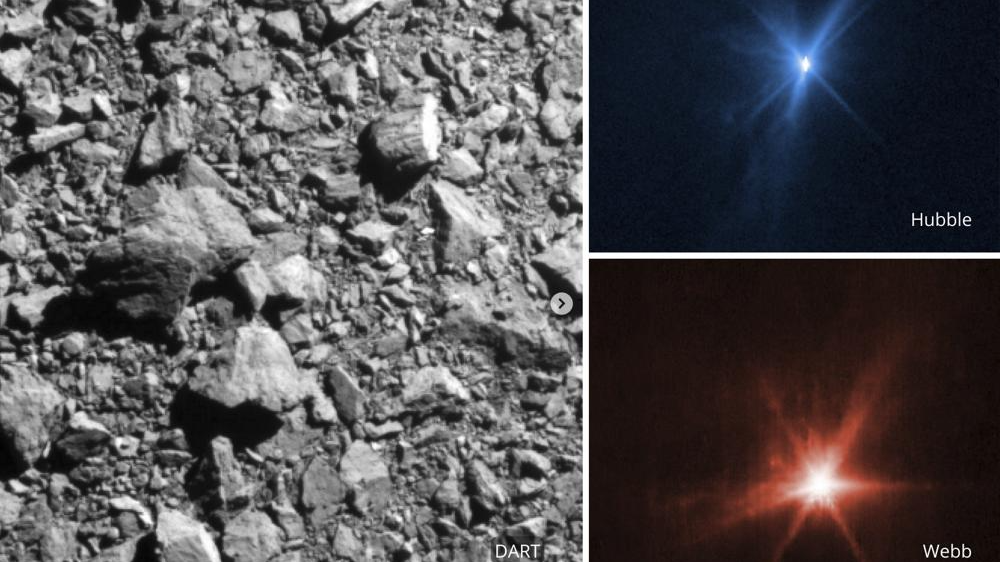
These images show three different views of the DART spacecraft impact on the asteroid Dimorphos on September 26, 2022. On the left is the view from a forward camera on DART, upper right the Hubble Space Telescope and lower right the James Webb Space Telescope. /AP
These images show three different views of the DART spacecraft impact on the asteroid Dimorphos on September 26, 2022. On the left is the view from a forward camera on DART, upper right the Hubble Space Telescope and lower right the James Webb Space Telescope. /AP
Pictures taken by the Hubble and James Webb space telescopes on this week's asteroid strike, the first planetary defense test of its kind, were released by NASA on Thursday.
Telescopes on all seven continents watched as NASA's Double Asteroid Redirection Test (DART) spacecraft slammed Monday into the harmless space rock, 11 million kilometers from Earth, in hopes of altering its orbit.
Scientists won't know the precise change until November; the demo results are expected to instill confidence in using the technique if a killer asteroid headed our way one day.
"This is an unprecedented view of an unprecedented event," Johns Hopkins University planetary astronomer and mission leader Andy Rivkin said in a statement.
All these pictures will help scientists learn more about the little asteroid Dimorphos, which took the punch and ended up with a sizable crater. The impact sent streams of rock and dirt hurtling into space, appearing as bright emanating rays in the latest photos.
The brightness of this double asteroid system – the 160-meter Dimorphos is actually the moonlet around a bigger asteroid – tripled after the impact as seen in the Hubble images, according to NASA.
Hubble and Webb will keep observing Dimorphos and its large companion Didymos over the next several weeks.
The $325 million DART mission was launched last year. The spacecraft was built and managed by Johns Hopkins' Applied Physics Laboratory in Laurel, Maryland.
(With input from AP)

